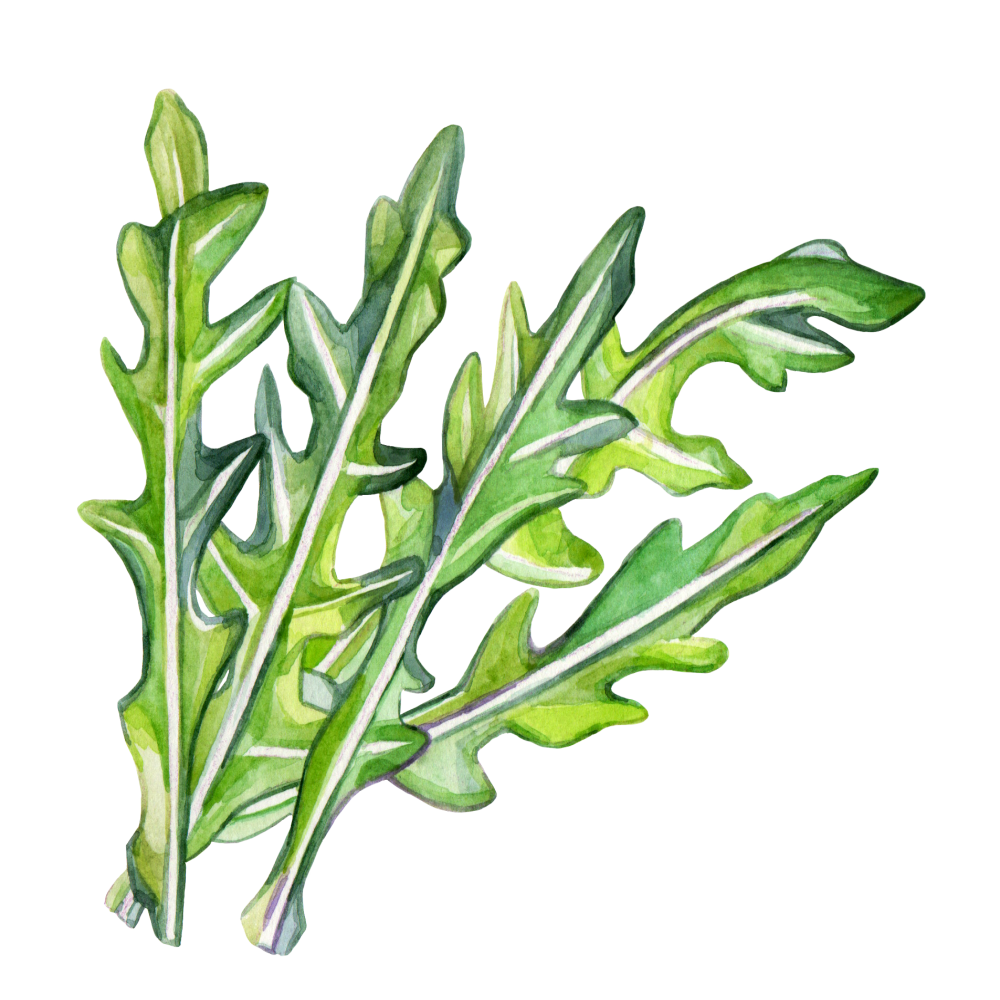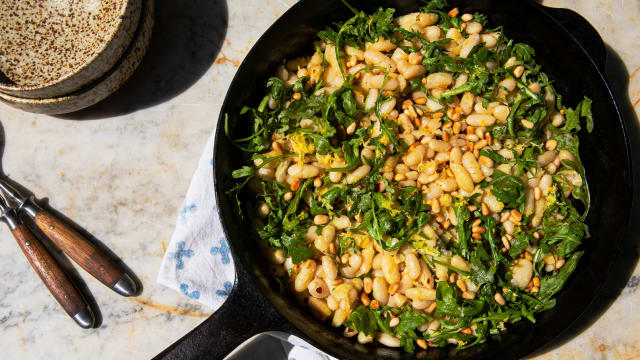Arugula

Latin Name: Eruca vesicaria
Other Names: rocket
Uses: vegetable
What is arugula?
This peppery member of the mustard family comes in two types: the domesticated kind, with wider, round-lobed leaves, and the wild “selvatica” type with skinnier, deeply cut leaves. Though arugula has been in American markets for a couple decades now, it seems like it came out of nowhere, going from an obscure farmer’s market vegetable to a fairly standard salad-aisle item.
Why is arugula healthy?
Like most dark leafy greens, arugula contains plentiful vitamins (especially A, C, and K) and minerals (like calcium, iron, magnesium, and potassium). It’s also full of glucosinolates — largely responsible for its sharp, peppery taste — which are being studied for possible cancer-fighting properties.
What does arugula taste like?
Like many of its mustard relatives, arugula has a pleasant bitter-peppery bite thanks to the organic compound glucosinolate. The tender texture of arugula is similar to spinach, but it’s low in oxalic acid — the stuff in spinach that leaves that chalky feeling on your teeth (and can contribute to kidney stones).
How do I use arugula?
One of the great things about arugula is its versatility. It’s just as nice raw in a salad or on a sandwich as it is blended into pesto or baked onto a pizza. Use it anywhere you’d ordinarily use spinach, and it’ll add peppery zip as well as color.
What does arugula pair well with?
Arugula is often paired with other salad greens (especially endive and radicchio), but its slightly pungent bitterness pairs really well with creamy ingredients, like white beans, cheese (especially fresh/farm cheese, chèvre, Parmesan, and veined cheeses), and eggs. Its flavor is highlighted by nutmeg, black pepper, lemon, garlic, chile flakes, nuts (especially walnuts and pine nuts), and pears.
Where does arugula grow?
Arugula originated in the Mediterranean and southern Europe, where it’s been grown since the days of ancient Rome and is still much appreciated. You don’t need a green thumb to grow either: it thrives in cool and temperate climates, growing pretty much anywhere its seed tumbles. It’ll even sow itself in sidewalk cracks.
How to buy arugula:
Look for dark green leaves that are not yellowing or wilting. It’s often sold bagged in “baby” form, but if you can’t check for mushy/slimy spots (avoid these!) on the leaves, just go with the freshness date. It’s a fairly tender green, so keep it in the crisper drawer and use within a week.
Fun arugula fact:
Arugula has suffered an unfair association with elitism, stemming by most accounts from President Obama namechecking it as he bemoaned the rising cost of groceries during his 2007 presidential campaign. However, arugula’s reputation as highbrow goes back far earlier — it’s been lumped in with yuppie excess since at least the 1980s. One mid-1990s writer even went so far as to call arugula “postmodern,” stating that avant-garde artist Laurie Anderson is “the arugula of performance art.”


